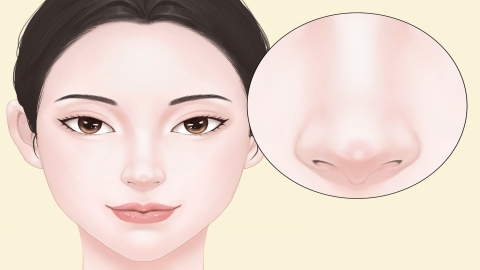What should I do if my nasal tip turns red one year after undergoing ear cartilage rhinoplasty?
Generally, ear cartilage rhinoplasty is a surgical procedure that involves implanting autologous ear cartilage into the nose to improve its appearance. Redness of the nasal tip one year after ear cartilage rhinoplasty may be caused by skin healing processes, local irritation, autologous tissue rejection, bacterial infection, or allergic reaction. Under a doctor's guidance, general treatments or medication can be used for treatment. The detailed analysis is as follows:

1. Skin Healing Process
Ear cartilage rhinoplasty is an invasive surgery. During the postoperative healing phase, the skin may become red, which does not require special treatment and usually subsides gradually within 7 to 10 days. If faster recovery is desired, intense pulsed light (IPL) therapy can be considered. This treatment uses strong pulsed light to stimulate collagen regeneration and accelerate skin metabolism. The usual cost ranges from 1,000 to 3,000 yuan. Noticeable improvement in skin condition can generally be seen within a week. Mild redness and warmth may occur after treatment, which are normal reactions.
2. Local Irritation
Redness may also result from interactions between the implanted ear cartilage and nasal tissues, or improper postoperative care causing local irritation. Laser therapy can be used to target inflammation and swelling with specific wavelengths of light. The typical cost of laser treatment ranges from 2,000 to 5,000 yuan, and usually 2 to 3 sessions are required, with each session spaced about a month apart, leading to noticeable improvement. Mild redness and crusting may occur after treatment, which are normal and will gradually subside.
3. Autologous Tissue Rejection
Although ear cartilage is autologous tissue, some patients may experience rejection reactions. In such cases, the implanted ear cartilage can be removed and replaced with materials that have better biocompatibility, such as expanded polytetrafluoroethylene (ePTFE) or silicone. The cost of removal and replacement typically ranges from 10,000 to 30,000 yuan. Symptoms generally subside gradually within 1 to 2 months. After replacement, the new tissue needs time to heal. Pain and swelling may occur during the removal process.
4. Bacterial Infection
Bacterial infection may occur due to improper postoperative care, allowing bacteria to enter the wound. Infection can cause localized symptoms such as redness, swelling, pain, and itching, and may be accompanied by fever and pus discharge. Under medical guidance, topical or oral antibiotics such as erythromycin ointment, amoxicillin capsules, or cefixime capsules can be used for treatment.
5. Allergic Reaction
The patient may be allergic to the ear cartilage or the implanted material. Allergic reactions may cause symptoms such as swelling, redness, and rashes, and may even lead to systemic allergic reactions, such as difficulty breathing and skin rashes. Antiallergic medications such as loratadine tablets, cetirizine hydrochloride tablets, or calamine lotion should be used under medical supervision to alleviate symptoms.
In daily life, to prevent these symptoms, it is important to maintain nasal hygiene, avoid scratching the nose with hands to prevent skin damage and infection, follow medical advice for postoperative care, avoid strenuous exercise, and refrain from consuming spicy or irritating foods.







